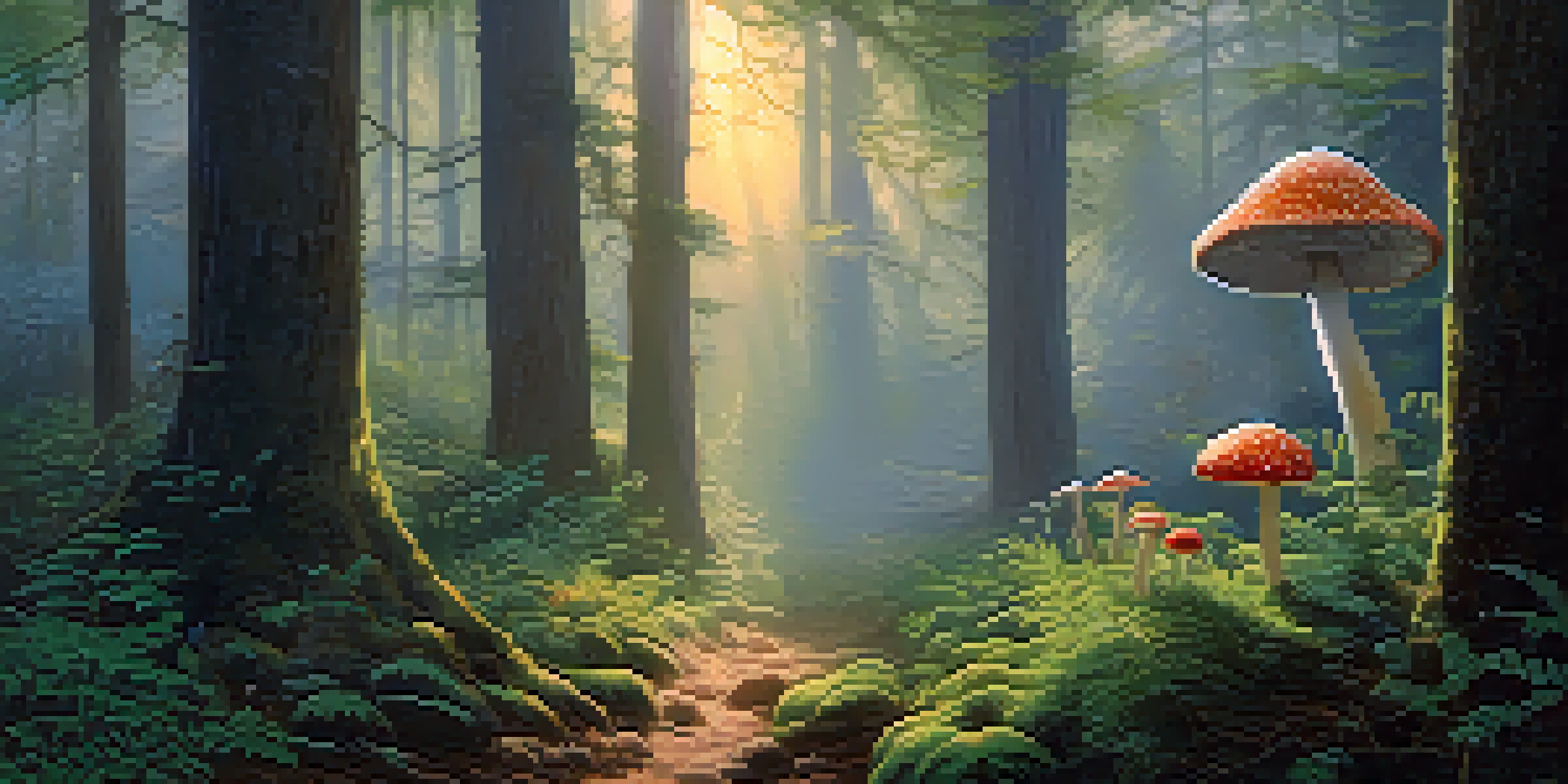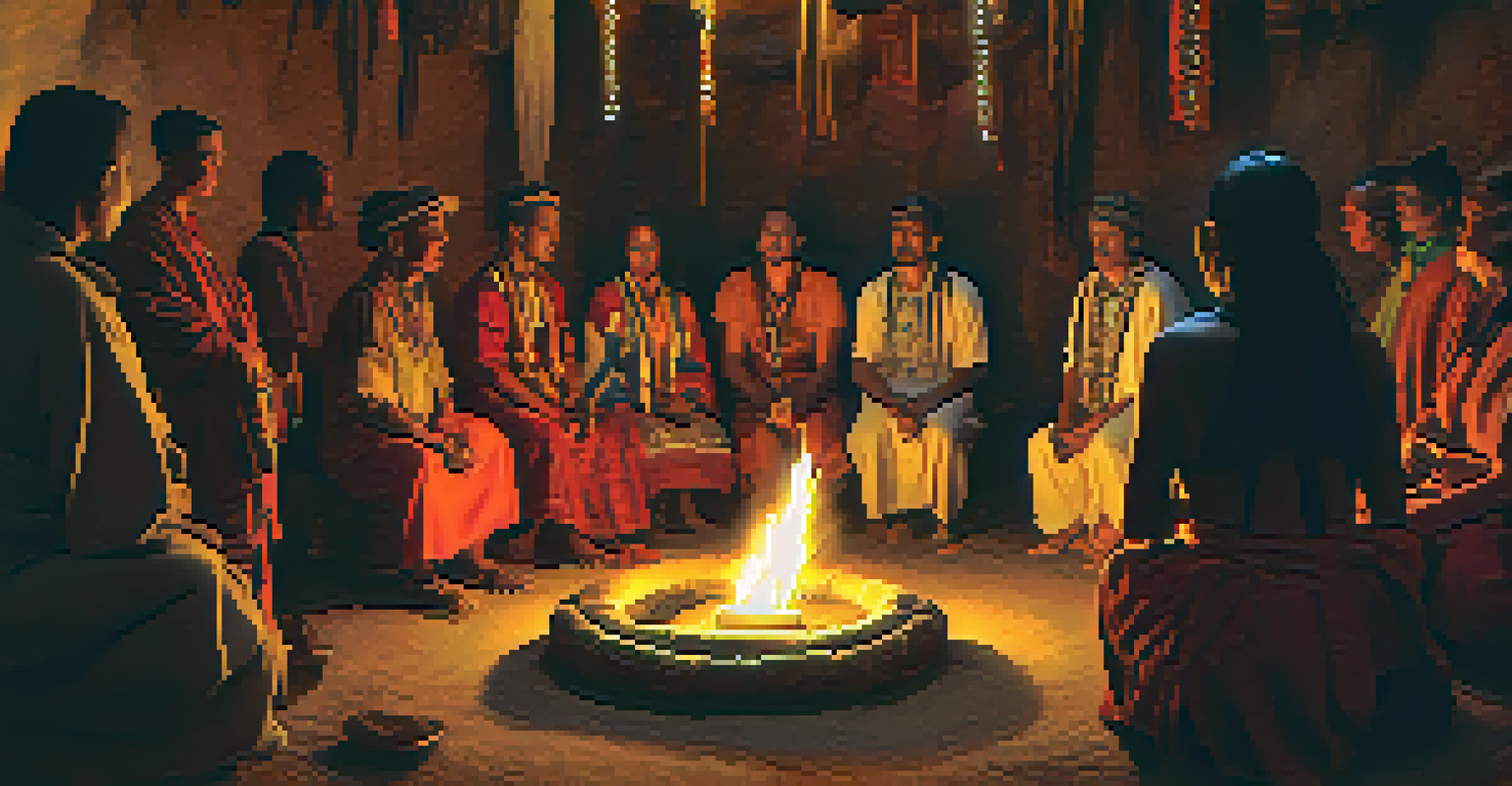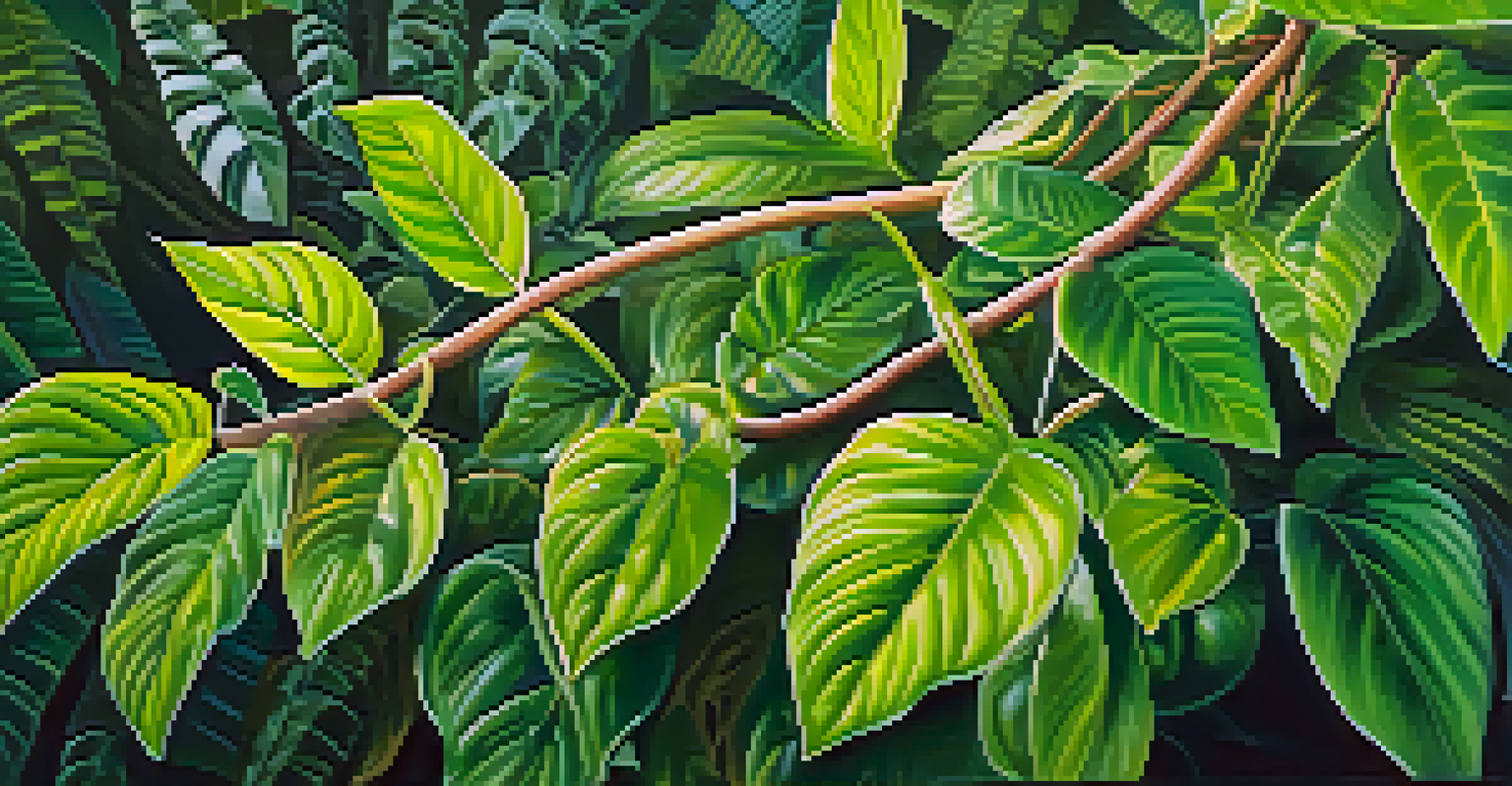The Influence of Entheogens on Indigenous Healing Traditions

Understanding Entheogens and Their Significance
Entheogens are substances that can induce altered states of consciousness, often used in spiritual and healing contexts. For many indigenous cultures, these natural compounds—such as peyote, ayahuasca, and psilocybin mushrooms—are more than mere tools; they are considered sacred. They bridge the gap between the physical and spiritual worlds, allowing individuals to connect deeply with their culture and environment.
The mind is not a vessel to be filled, but a fire to be kindled.
The significance of entheogens goes beyond personal experience; they are seen as a way to access wisdom from ancestors and the universe. Many practitioners believe that these substances can reveal insights that lead to emotional healing and personal growth. This perspective underscores the holistic approach of indigenous healing traditions, which often emphasize the interconnectedness of mind, body, and spirit.
Moreover, the rituals surrounding the use of entheogens are integral to their effectiveness. These practices often involve guidance from experienced shamans or healers, creating a safe space for exploration. This communal aspect reinforces social bonds and cultural identity, illustrating how entheogens are woven into the fabric of indigenous life.
Historical Context of Entheogen Use in Indigenous Cultures
The use of entheogens among indigenous peoples is rooted in ancient traditions, often dating back thousands of years. Archaeological evidence suggests that these substances were utilized in rituals and healing ceremonies long before modern science began to explore their effects. This rich history highlights the profound respect and understanding indigenous cultures have developed regarding these powerful compounds.

In many cases, the traditions surrounding entheogen use are passed down through generations, preserving ancient knowledge and practices. For instance, the Mazatec people of Mexico have long used psilocybin mushrooms for healing and divination, embedding these rituals into their cultural identity. Such practices not only serve the individual but also strengthen communal ties and cultural heritage.
Entheogens in Indigenous Cultures
Entheogens are sacred substances in many indigenous cultures, used for spiritual connection and healing.
Despite their historical significance, these practices have often faced challenges from colonialism and modernization. The imposition of Western values frequently led to the suppression of indigenous traditions, including the use of entheogens. However, the resurgence of interest in these practices today reflects a broader movement to reclaim and honor indigenous knowledge systems.
The Role of Shamans in Healing with Entheogens
Shamans play a pivotal role in the healing practices involving entheogens, acting as guides and facilitators. These individuals are often seen as intermediaries between the physical and spiritual realms, possessing deep knowledge of the substances and their effects. Their expertise not only ensures the safety of participants but also enriches the experience through ritual and intention.
We are not human beings having a spiritual experience; we are spiritual beings having a human experience.
During ceremonies, shamans create a sacred environment that enhances the healing process. This may involve chanting, drumming, and the use of other traditional instruments, all of which help to set the mood and focus the mind. The shaman’s presence reassures participants, allowing them to surrender to the experience and explore their inner landscapes more freely.
Furthermore, the relationship between the shaman and the community is significant. Shamans often hold a respected position, embodying wisdom and guidance. This dynamic reinforces the idea that healing is a communal journey, where the individual's transformation contributes to the collective well-being of the community.
Modern Scientific Perspectives on Entheogens
In recent years, there has been a growing interest in the scientific study of entheogens and their therapeutic potential. Researchers are exploring how these substances can aid in treating various mental health conditions, such as depression, anxiety, and PTSD. This aligns with indigenous understandings that entheogens can facilitate profound emotional healing.
Studies have shown that when used in controlled settings, entheogens can lead to lasting positive changes in mood and behavior. For example, clinical trials involving psilocybin have demonstrated promising results, suggesting that these substances can catalyze meaningful psychological breakthroughs. Such findings are beginning to bridge the gap between traditional healing practices and modern medicine.
Shamans as Healing Guides
Shamans play a crucial role in entheogen ceremonies, providing guidance and creating a safe environment for participants.
However, it’s important to approach this topic with respect for indigenous knowledge systems. While scientific research can validate the benefits of entheogens, it should not overshadow the cultural significance and traditional practices associated with their use. A collaborative approach that honors both perspectives may provide the most holistic understanding of these powerful substances.
Cultural Appropriation and Entheogens in Modern Society
As entheogens gain popularity in contemporary society, discussions around cultural appropriation have become increasingly relevant. Many individuals outside indigenous cultures seek these experiences without understanding the profound cultural significance behind them. This raises important ethical questions about who has the right to access and use these sacred substances.
Cultural appropriation occurs when elements of one culture are taken without permission or proper understanding, often leading to commodification. In the case of entheogens, this can result in the dilution of traditional practices and a lack of respect for the cultures that have nurtured them for centuries. It’s crucial to acknowledge the origins of these substances and the people who have historically used them.
To engage with entheogens respectfully, individuals should seek to learn from indigenous voices and support their rights. This includes advocating for the preservation of traditional practices and recognizing the wisdom embedded in these cultures. By approaching entheogens with humility and respect, we can honor the rich heritage while exploring their transformative potential.
Personal Stories of Healing Through Entheogens
Many individuals have shared transformative experiences related to entheogen use, often highlighting profound personal healing. For instance, people have reported overcoming deep-seated trauma, finding clarity in their life’s purpose, or experiencing a renewed sense of connection with nature. These narratives underscore the potential of entheogens to catalyze meaningful change.
In one moving account, a woman described how ayahuasca helped her process grief after losing a loved one. During the ceremony, she felt a powerful connection to her ancestors, which provided comfort and insight. Such personal stories demonstrate that the impact of entheogens often extends beyond the individual, radiating out to affect relationships and communities.
Ethics of Modern Entheogen Use
As entheogens gain popularity, it's vital to respect their cultural significance and engage with indigenous knowledge responsibly.
These experiences, while deeply personal, echo the collective healing journey inherent in indigenous traditions. Participants often emerge from ceremonies with a sense of renewed purpose, a greater appreciation for life, and a commitment to their community. This speaks to the idea that healing is not just an individual endeavor but a shared experience that can strengthen communal bonds.
Future Directions for Entheogen Research and Integration
Looking ahead, the future of entheogen research holds exciting possibilities, particularly in the context of mental health treatment and spiritual exploration. As more studies emerge, there is potential for integrating these substances into mainstream therapeutic practices. This could pave the way for a more holistic approach to mental health that acknowledges both the psychological and spiritual dimensions of healing.
Moreover, collaboration between scientists and indigenous communities can create opportunities for respectful exchange of knowledge. By involving indigenous voices in research and policy discussions, we can ensure that their wisdom informs the modern understanding of entheogens. This partnership can also foster a deeper appreciation for the cultural significance of these substances.

Ultimately, the path forward must prioritize ethical considerations and respect for indigenous rights. As society continues to explore the therapeutic potential of entheogens, it is essential to honor the traditions that have safeguarded this knowledge. By doing so, we can create a future where entheogens are embraced as powerful tools for healing, rooted in both tradition and innovation.